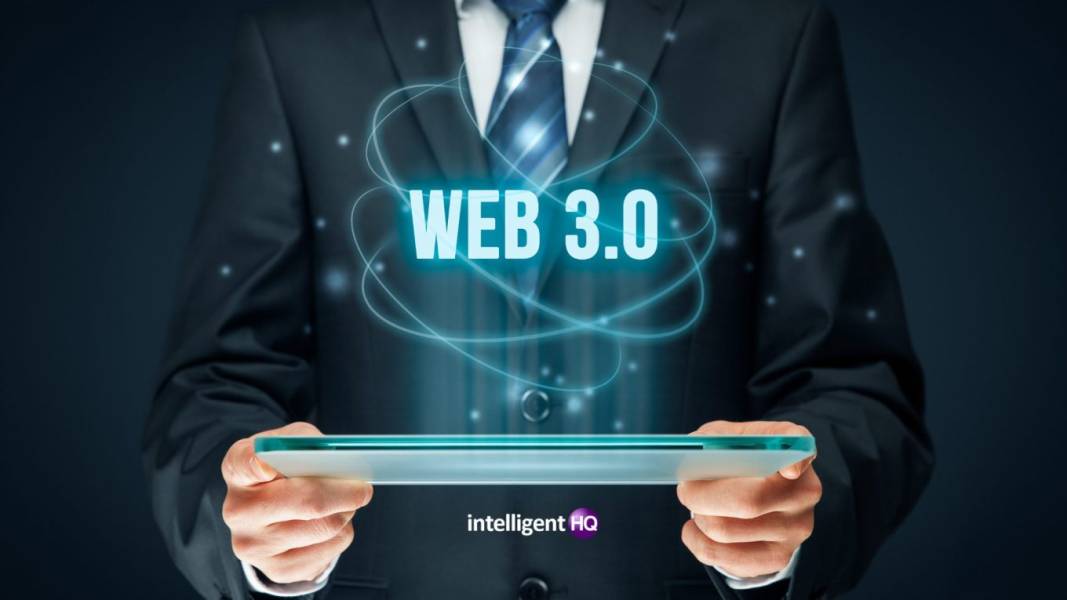By 2030, the Web3 industry’s market size is projected to reach £66.3 billion, and many companies and start-ups are planning to introduce new products and solutions in the coming years. OwlGaze CEO, Ralph Chammah, reveals the three key Web3 industry concerns and cyber risks businesses should be addressing.

Web3, or the third generation of the World Wide Web, is a term used to refer to the next stage of development of the internet. This new version of the web will have the power to bring together many of the technologies and capabilities of the internet, including cloud computing, blockchain, and artificial intelligence. Web3 is expected to revolutionize the way we interact with the internet, allowing for a more secure, reliable, and efficient experience.
According to Ralph Chammah, Chief Executive Officer of OwlGaze, the current Web3 cycle might be longer than previous ones, not only because of internal factors but also due to the overall state of the global economy.
“There remain many challenges to be overcome, particularly for blockchain and crypto-related projects, whose tech is also intrinsically linked to Web3, but the next year could be key to implementing many of these strategies in practice,” says Chammah. “It is timely to take a look at some of the key projections for the Web3 industry, and understand how it may continue to evolve and transform. Web trends are always changing, but what will be big in the future?”
At the core of Web3 is the concept of decentralization. This means that instead of relying on a single entity, such as a company or government, to provide the infrastructure for the internet, Web3 will provide a platform for many different entities to come together and build a shared, distributed network. This will allow for greater control and flexibility, as well as increased security and privacy.
The features of Web3 will also give users more control over their data and how they use it. For example, they will be able to control who can access their data and how it is used. They will also be able to access more secure storage solutions, as well as more powerful analytics tools. This will allow users to better understand the data they are collecting and make more informed decisions.
In addition, Web3 will also provide access to more advanced technologies, such as blockchain and artificial intelligence. With blockchain, users will be able to securely store and transfer information, while artificial intelligence will allow for more sophisticated analysis and decision-making. This will allow for more efficient and accurate decision-making, as well as improved customer service and increased automation.
Finally, Web3 will provide access to new, innovative tools and services. This could include applications that allow users to access and store data in a secure and encrypted manner, as well as new ways to share data and collaborate with others.
These are the major Web3 industry trends that businesses should be aware of.
#1 – A rise in decentralised autonomous organisations (DAOs) governed by autonomous smart contracts
DAOs governed by autonomous smart contracts are emerging as a new option for digital distribution platforms in the creator economy. These organisations don’t depend on centralisation to share their content, which creates opportunities for creators who prefer self-management. However, there are risks inherent in this choice, as these DAOs lack regulatory intervention.
Design flaws and vulnerabilities in the source code of smart contracts can pose a major risk to sustainable operations and continuous user acquisition by DAOs. Fully computer-controlled operations leave zero fallback options in the event of a protocol hijack caused by a compromised contract. Therefore, it is essential to conduct diligent code review and testing practices in the early stages as well as throughout the lifecycle of DAOs where these smart contracts form the backbone of blockchain operations.
#2 – Permissionless and trustless applications of traditional business models will spearhead the maturity and mainstream adoption of Web3
When bad actors can anonymously influence decision-making, it’s more difficult to build on the Web3 standard. They’ll have no accountability, low barriers to entry, and a lack of due diligence. This independence in the model presents several security and privacy challenges.
Transaction information on the blockchain is available for everyone to read, but permissionless blockchains allow any user to access this data. Malicious actors can use this opportunity to reverse-engineer and study the behaviour of user addresses, leading to even more attacks in the future.
Permissionless blockchains may expose sensitive user information to bad actors, which may tarnish its reputation. This then would drive legitimate users away from the platform leading to business redundancy.
#3 – Usage of artificial intelligence (AI) in Web3 products will be the driving force behind decentralisation of control and autonomous decision-making by blockchains.
AI can improve user trust and experience in Web3 applications by playing a pivotal role to drive consensus among application users. Raw data from models can be used to extract valuable insights and drive business strategies towards more economically favourable outcomes.
Wallet addresses on a blockchain cannot be easily mapped to physical users for verification, making it crucial for Web3 organisations to respond to and remediate threats before any adverse impact. This sets the tone for predictive analytics, allowing fraudulent activity to be predicted based purely on users’ past behaviours.
Overall, Web3 remains an evolving business landscape, but whilst the allure of new technology will bring in plenty of investors, its volatility also attracts plenty of cyber actors. Businesses would do well to invest in their own security measures so that, no matter what changes or cyberthreats emerge, they can always proactive and a step ahead of any potential malicious activity or revenue loss.
You can download OwlGaze’s latest white paper: “Blockchain Protects Our Data, But Who Protects The Blockchain?”, here. This paper aims to highlight the prominent security challenges faced by companies operating or dependent on blockchain systems.
Web3 is expected to revolutionize the way we use the internet and provide users with a more secure, reliable, and efficient experience. With its ability to bring together many of the technologies and capabilities of the internet, Web3 will provide users with greater control and flexibility over their data, as well as better security and privacy. Additionally, users will be able to access more advanced technologies, such as blockchain and artificial intelligence, which will enable more efficient and accurate decision-making. Finally, Web3 will provide access to new, innovative tools and services, allowing users to access and store data in a secure and encrypted manner and to collaborate with others in new ways.

Hernaldo Turrillo is a writer and author specialised in innovation, AI, DLT, SMEs, trading, investing and new trends in technology and business. He has been working for ztudium group since 2017. He is the editor of openbusinesscouncil.org, tradersdna.com, hedgethink.com, and writes regularly for intelligenthq.com, socialmediacouncil.eu. Hernaldo was born in Spain and finally settled in London, United Kingdom, after a few years of personal growth. Hernaldo finished his Journalism bachelor degree in the University of Seville, Spain, and began working as reporter in the newspaper, Europa Sur, writing about Politics and Society. He also worked as community manager and marketing advisor in Los Barrios, Spain. Innovation, technology, politics and economy are his main interests, with special focus on new trends and ethical projects. He enjoys finding himself getting lost in words, explaining what he understands from the world and helping others. Besides a journalist, he is also a thinker and proactive in digital transformation strategies. Knowledge and ideas have no limits.




























